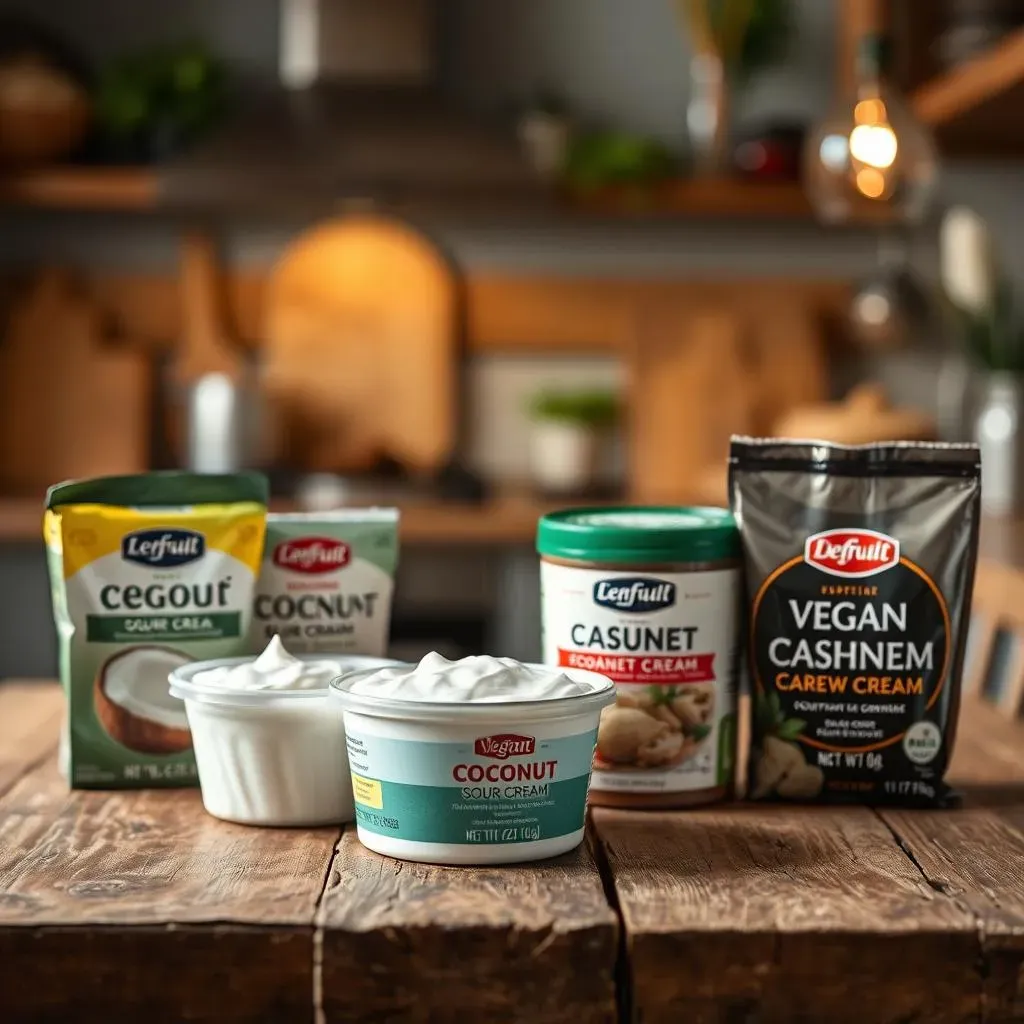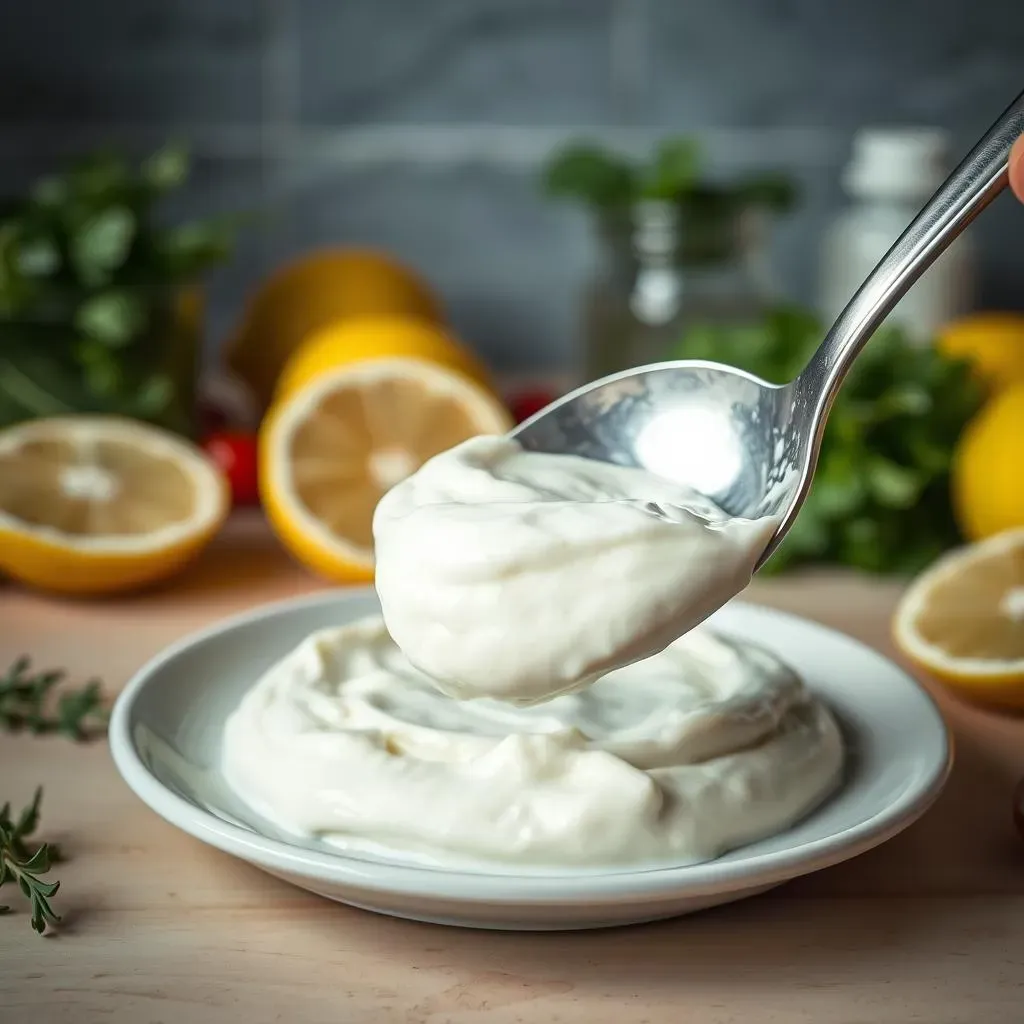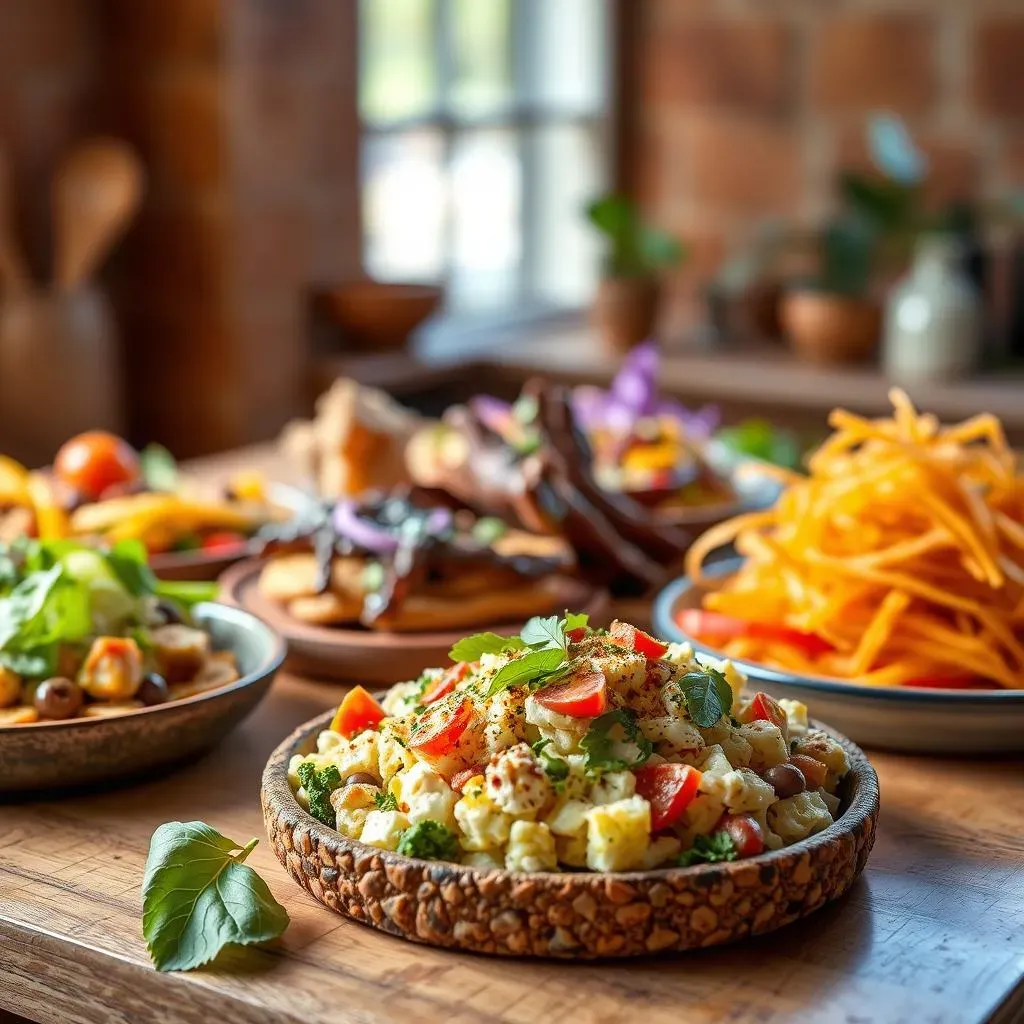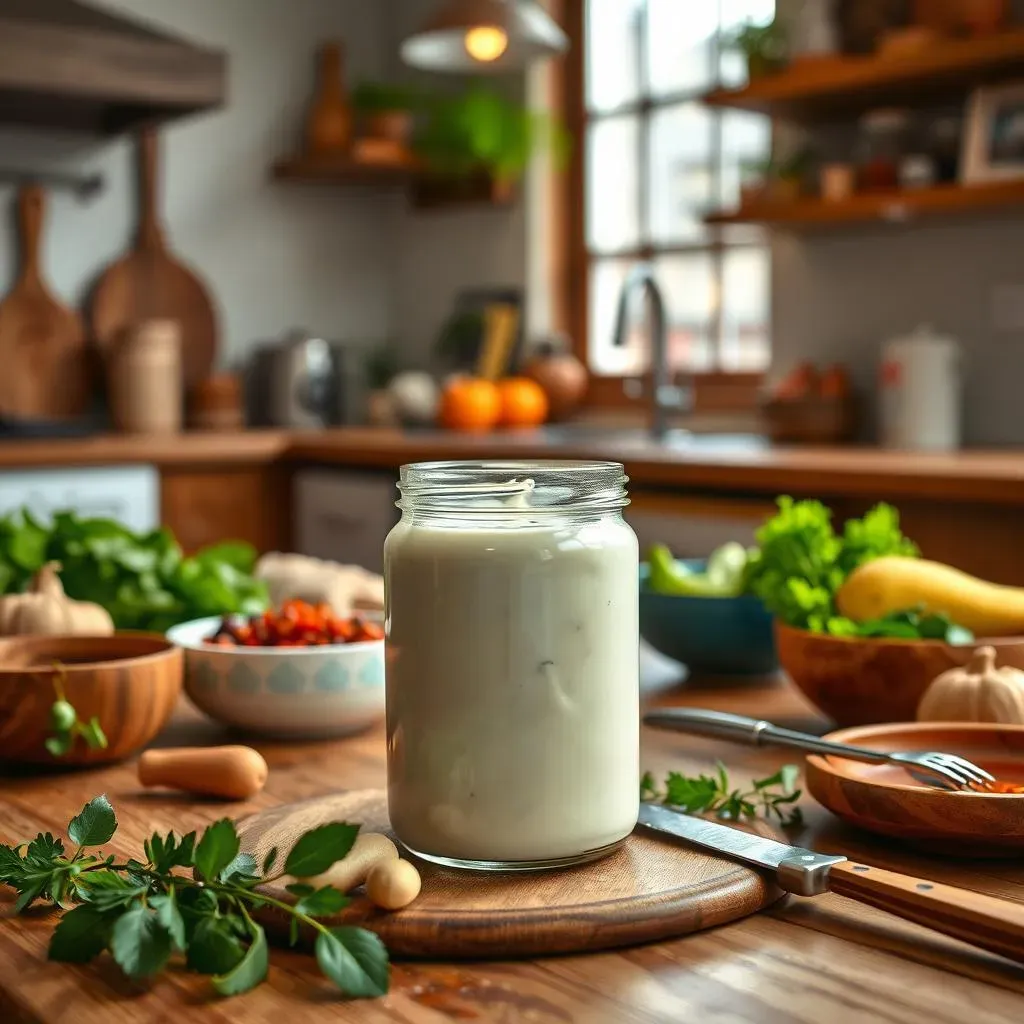Table of Contents
Craving that creamy, tangy topping for your baked potatoes or a dollop of deliciousness in your chili, but committed to a vegan lifestyle? Don't despair! This comprehensive guide explores the world of vegan sour cream substitutes, offering a delicious solution to your dairy-free dilemma. We'll take you on a journey through the best store-bought options and reveal the secrets to creating your own homemade vegan sour cream, perfect for any recipe. Get ready to discover simple swaps, creative culinary uses, and expert tips to ensure your vegan sour cream substitutes are always a resounding success. Whether you're a seasoned vegan chef or a curious newbie, this article is your ultimate resource for mastering the art of dairy-free deliciousness, ensuring every dish is creamy, tangy, and perfectly plant-based. Prepare to explore a wealth of information on vegan sour cream substitutes, from quick and easy options to more elaborate recipes. We'll cover everything from choosing the right ingredients to troubleshooting common issues, leaving you confident in your ability to create truly amazing vegan dishes. Let's dive in and uncover the best vegan sour cream substitutes!
Best Vegan Sour Cream Substitutes: A Taste Test

Best Vegan Sour Cream Substitutes: A Taste Test
Coconut Cream: Tropical Tang
Let's start with a classic: coconut cream. This is often the first choice for many vegans, and for good reason! It’s readily available, relatively inexpensive, and boasts a naturally rich and creamy texture. The flavor is subtly sweet, lending itself well to both sweet and savory dishes. Think of it as the versatile workhorse of vegan sour cream substitutes. It's perfect for topping baked potatoes, adding a luxurious feel to soups, or even swirling into curries for an unexpected creamy depth. However, its sweetness might not be ideal for every application; its subtle coconut flavor can sometimes overpower more delicate dishes.
One thing to keep in mind with coconut cream is the quality. Full-fat coconut cream will give you the best results, providing that thick, luscious texture you crave. Don't be tempted to use light coconut milk – it'll be far too thin and watery for the job. For the best results, chill your can of coconut cream overnight before scooping out the thick, solidified cream from the top. This simple step significantly improves the texture and creaminess of your substitute.
Pro | Con |
|---|---|
Readily available | Can be subtly sweet |
Affordable | Coconut flavor may overpower |
Thick and creamy texture | Requires full-fat version |
Cashew Cream: The Nutty Contender
Next up is cashew cream, a slightly more involved but incredibly rewarding option. Soaking raw cashews overnight softens them, allowing for a wonderfully smooth and creamy texture when blended. The flavor is mild and nutty, offering a blank canvas for various flavor additions. You can easily adjust the tanginess by adding lemon juice or vinegar, making it a highly customizable substitute. Cashew cream is a dream in dips, sauces, and as a topping for desserts. It's incredibly versatile and can hold its own in both sweet and savory applications.
The preparation of cashew cream does require a bit more effort. You'll need to soak the cashews for at least four hours, or preferably overnight. This step is crucial for achieving that perfect smooth, creamy consistency. But once you've got your soaked cashews, the blending process is quick and easy. Experiment with adding different spices and flavorings to create unique variations – a pinch of smoked paprika for a smoky cashew cream, or a splash of vanilla extract for a sweeter version. The possibilities are endless!
- Requires overnight soaking
- Mild and nutty flavor
- Highly customizable
- Excellent in dips and sauces
Homemade Vegan Sour Cream: Recipes & Tips

Homemade Vegan Sour Cream: Recipes & Tips
The Basic Vegan Sour Cream Recipe
Let's get down to the nitty-gritty – making your own vegan sour cream is easier than you think! The foundation of most recipes involves blending soaked cashews (for creaminess), lemon juice (for tang), and a touch of water (for consistency). The magic happens when these simple ingredients combine to create a surprisingly authentic sour cream texture. You can easily adjust the amount of lemon juice to control the tartness, making it perfect for both sweet and savory dishes. Remember, patience is key; the longer you blend, the smoother and creamier your vegan sour cream will be.
Many recipes also call for a thickening agent, like arrowroot powder or cornstarch, but I often skip this step. The cashew cream itself is usually thick enough. However, if you find your mixture too thin, a teaspoon or two of arrowroot powder, whisked in before blending, will do the trick. Don't overthink it. Start with a basic recipe, and then experiment with variations to create your perfect vegan sour cream. The beauty of making your own is the ability to customize it to your liking.
Ingredient | Amount | Notes |
|---|---|---|
Raw cashews | 1 cup (soaked overnight) | Soaking is crucial for creaminess |
Lemon juice | 2 tablespoons | Adjust to taste |
Water | 1/4 cup (or more, as needed) | For desired consistency |
Flavor Variations: Beyond the Basics
Once you've mastered the basic recipe, the fun really begins! Experimenting with flavors is where your creativity shines. A dash of nutritional yeast adds a cheesy note, perfect for topping baked potatoes or adding to dips. A teaspoon of Dijon mustard brings a subtle sharpness, complementing savory dishes beautifully. For a sweeter twist, a touch of vanilla extract or maple syrup transforms your vegan sour cream into a delightful topping for pancakes or fruit. Don't be afraid to experiment with herbs and spices, too. Fresh dill or chives add a bright, herbaceous note, while a pinch of smoked paprika delivers a smoky depth.
Consider the intended use of your vegan sour cream when adding flavors. A savory sour cream will pair well with herbs, spices, and even a touch of garlic or onion powder. For sweet applications, vanilla extract, maple syrup, or even a hint of cinnamon can create magic. Remember to taste as you go; you can always add more flavor, but you can't take it away! Take notes on what works best for you. This way, you can replicate your favorite versions easily. The best part? You'll discover your signature vegan sour cream blend, perfect for your culinary creations.
- Nutritional yeast (cheesy flavor)
- Dijon mustard (sharpness)
- Vanilla extract (sweetness)
- Herbs (fresh dill, chives)
- Spices (smoked paprika, cinnamon)
Storage and Shelf Life: Keeping it Fresh
Proper storage is crucial for extending the shelf life of your homemade vegan sour cream. Store it in an airtight container in the refrigerator. It should last for about a week, but it’s best to consume it within 3-4 days for optimal flavor and texture. If you notice any signs of spoilage, like a change in smell or texture, discard it immediately. Don't risk it! Making a fresh batch is always a quick and easy process.
While a week might seem short, consider this: you're making a small batch, tailored to your immediate needs. This ensures you're always using fresh, flavorful vegan sour cream. Think of it as a culinary adventure, constantly experimenting and refining your technique. Plus, it’s a great excuse to make another batch and try out new flavor combinations! The more you practice, the better you'll become at creating the perfect vegan sour cream for every occasion.
Beyond the Basics: Creative Vegan Sour Cream Uses

Beyond the Basics: Creative Vegan Sour Cream Uses
Beyond the Basics: Creative Vegan Sour Cream Uses
Let's move beyond the typical uses and explore some truly creative ways to incorporate your vegan sour cream. Think outside the bowl! It's not just for topping baked potatoes anymore. We can elevate simple dishes, add creamy richness to unexpected places, and create entirely new culinary experiences. For instance, consider using it as a secret ingredient in vegan mac and cheese for an extra layer of creaminess and tang. Or, how about swirling it into a vibrant vegan pasta sauce for a luxurious, unexpected twist? The possibilities are endless, limited only by your imagination!
Don't be afraid to experiment! Use your vegan sour cream as a base for dips, adding herbs, spices, and roasted vegetables for a delicious appetizer. Try it as a marinade for tofu or tempeh, adding a creamy texture and bright flavor. Or, use it to create a flavorful vegan ranch dressing – simply blend your sour cream with fresh herbs, garlic powder, and a touch of lemon juice. The resulting dressing is perfect for vegetables, salads, or as a dip for your favorite snacks. Remember, the key is to have fun and let your creativity flow!
Creative Use | Flavor Profile | Dish Suggestion |
|---|---|---|
In vegan mac and cheese | Creamy, tangy, cheesy | Vegan comfort food |
In pasta sauce | Rich, savory, creamy | Vegan pasta primavera |
As a dip base | Versatile, customizable | Roasted vegetable dip |
Marinade for tofu/tempeh | Creamy, tangy, flavorful | Grilled tofu skewers |
Sweet and Savory Surprises
The versatility of vegan sour cream extends to both sweet and savory applications. In sweet treats, consider using it as a frosting for vegan cakes or cupcakes, or as a filling for vegan pies. Its creamy texture and subtle tanginess complement sweet flavors beautifully. A dollop of vegan sour cream can also elevate the flavor of pancakes or waffles, creating a delightful contrast to the sweetness of the batter. For a truly unique dessert, try incorporating it into vegan ice cream for a creamy, tangy twist.
On the savory side, vegan sour cream is a game-changer. It adds a creamy depth to soups, stews, and chilis, binding the flavors together and creating a luxurious texture. Consider using it as a base for creamy vegan potato salad or coleslaw, or as a topping for chili, tacos, or nachos. Its tanginess cuts through the richness of these dishes, adding a refreshing element. Don't be afraid to get creative and experiment with different flavor combinations.
- Vegan cakes and cupcakes
- Vegan pies and tarts
- Pancakes and waffles
- Vegan ice cream
- Soups, stews, and chilis
- Potato salad and coleslaw
- Tacos and nachos
Troubleshooting Your Vegan Sour Cream Substitutes

Troubleshooting Your Vegan Sour Cream Substitutes
Too Thin? Too Thick? Achieving the Perfect Consistency
One of the most common challenges with homemade vegan sour cream is achieving the right consistency. Sometimes it's too thin, other times it's too thick. Don't worry, this is totally fixable! If your sour cream is too thin, the culprit is likely insufficient cashew soaking time or too much liquid. Make sure your cashews are thoroughly soaked (at least 4 hours, preferably overnight). If it's still too thin after blending, add a tablespoon or two of arrowroot powder or cornstarch, whisking it in before blending. This will help thicken the mixture significantly. Conversely, if your vegan sour cream is too thick, you might have used too few cashews or too little liquid. Add a tablespoon of water at a time, blending until you achieve the desired consistency. Remember, small adjustments make a big difference!
Another factor affecting consistency is the type of cashews used. Some cashews are naturally drier than others. If you consistently encounter issues with consistency, try a different brand of cashews. Experimentation is key! Keep detailed notes of your ingredients and adjustments – this will help you fine-tune your recipe over time. Don't be discouraged by initial inconsistencies; it's all part of the learning process. With a little practice, you'll be whipping up perfectly creamy vegan sour cream every time.
Problem | Solution |
|---|---|
Too thin | Add arrowroot powder/cornstarch, reduce liquid |
Too thick | Add water, use more cashews |
Lumpy | Blend longer, ensure cashews are fully soaked |
Off-Flavors? Mastering the Art of Tang
Sometimes, even with the perfect consistency, your vegan sour cream might have an off-flavor. This is often due to the balance of tang and sweetness. If it's too tart, you might have added too much lemon juice or vinegar. Start by tasting your mixture before adding any additional acid. If it needs a bit less tang, you can try adding a touch of maple syrup or agave nectar to balance the flavor profile. Conversely, if it lacks sufficient tang, add lemon juice or vinegar very gradually, tasting after each addition. Remember, small adjustments are key to achieving the perfect balance.
Another potential culprit is the freshness of your ingredients. Using older or stale cashews can impact the overall flavor. Always use fresh, high-quality ingredients whenever possible. If you're using store-bought lemon juice, be aware that some brands are more acidic than others. Experimentation is vital! Keep a detailed record of your ingredient brands and quantities, allowing you to pinpoint potential issues and refine your recipe. Creating the perfect vegan sour cream takes practice, but the rewards are well worth the effort. The satisfaction of creating a delicious, dairy-free sour cream from scratch is immensely rewarding.
- Too tart: Add sweetener (maple syrup, agave)
- Not tangy enough: Add lemon juice or vinegar (gradually)
- Off-flavor: Check ingredient freshness
- Rancid: Discard immediately